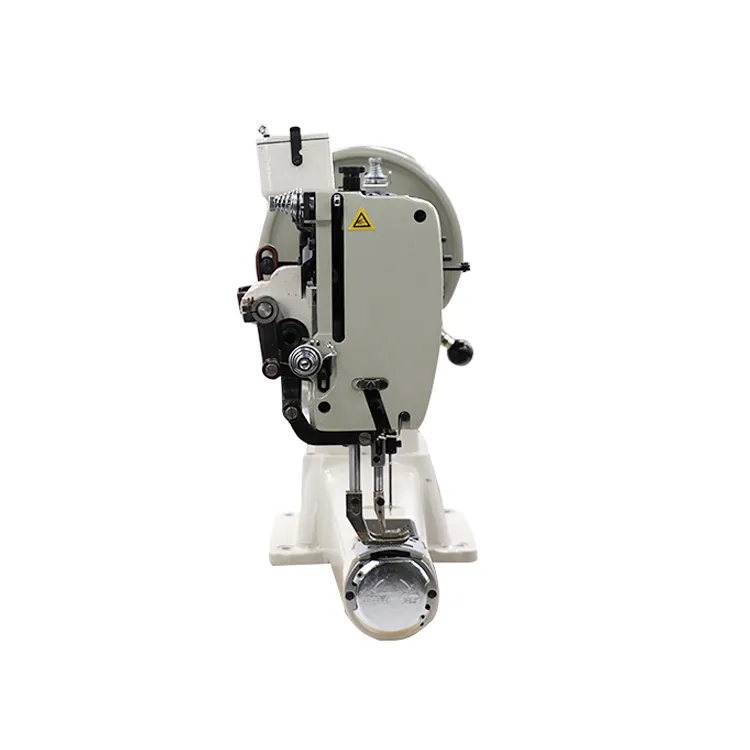Understanding the Functionality and Benefits of Lock Stitch Sewing Machines
Understanding Lock Stitch Machines A Key Component in Sewing Technology
Lock stitch machines represent a crucial innovation in the world of sewing, setting the foundation for modern garment production and textile manufacturing. These machines utilize a specific stitch formation that interlocks two threads, producing a strong and reliable seam. This article delves into the mechanics, types, applications, and benefits of lock stitch machines, illustrating their significance in sewing technology.
Mechanics of Lock Stitch Machines
At the heart of a lock stitch machine is its ability to create a lock stitch through the interaction of two threads the upper thread and the lower thread. The upper thread is fed from a spool on top of the machine, while the lower thread, typically a bobbin thread, is housed in a compartment beneath the needle plate. When the needle pierces the fabric, the upper thread forms a loop that intertwines with the lower thread, subsequently locking them together and thus creating a secure stitch.
The lock stitch’s unique formation enables it to handle various types of fabrics, from lightweight silks to heavyweight denims. The adaptability of this stitch type makes it a favorite for various sewing applications, particularly in the clothing and home textiles industries.
Types of Lock Stitch Machines
Lock stitch machines can be categorized into several types, each designed for specific applications
1. Industrial Lock Stitch Machines These machines are designed for high-volume production environments, such as garment factories. They often have advanced features that enhance speed, durability, and ease of use. Many industrial models are equipped with automatic thread trimming and programmable features to streamline operations.
2. Home Sewing Machines Lock stitch machines for home use are typically more compact and user-friendly, catering to hobbyists and amateur sewists. These machines often come with user-friendly interfaces and various stitch options, allowing users to create intricate patterns alongside basic sewing tasks.
3. Walking Foot Machines This type of lock stitch machine is designed for sewing thicker materials, such as leather and heavy canvas. The walking foot mechanism helps to feed the fabric evenly, preventing any shifting or bunching that can occur when sewing multiple layers or thick materials.
4. Embroidery Machines Advanced lock stitch machines serve dual purposes, allowing users to create embroidery designs alongside standard sewing. These machines come with built-in patterns and the capacity to connect to computers for custom designs.
lock stitch machine

Applications of Lock Stitch Machines
Lock stitch machines are prevalent across various industries, including apparel manufacturing, upholstery, and quilting. In the fashion industry, they are essential for the construction of garments, ensuring that seams remain flat and sturdy. Upholsterers rely on lock stitch machines to secure heavy fabrics to furniture, while quilters appreciate the precision and durability offered by the lock stitch in assembling quilt layers.
Additionally, lock stitch machines are commonly used in the production of soft goods like curtains, drapes, and bedding items. Their ability to create strong, neat seams enhances the overall quality and durability of these products.
Benefits of Lock Stitch Machines
The advantages of using lock stitch machines are manifold
- Strength The interlocking nature of the lock stitch results in a seam that can withstand tension, making it ideal for high-stress areas in garments or upholstery.
- Versatility Lock stitch machines can accommodate a wide range of fabrics and project types, making them indispensable tools in both industrial and home settings.
- Efficiency Modern lock stitch machines, especially industrial models, enable rapid production capabilities, helping businesses meet high demand and improve productivity.
- Precision With the ability to produce consistent and even stitches, lock stitch machines contribute to a polished finish, enhancing the aesthetics of the final product.
In conclusion, lock stitch machines have proven to be an integral part of the sewing industry, marrying functionality with efficiency. Whether in a professional setting or at home, understanding the mechanics and applications of these machines can significantly enhance sewing projects’ quality and productivity. As technology continues to evolve, the lock stitch machine will undoubtedly maintain its important role in textile manufacturing and garment production.
-
Industrial Cylinder Arm Sewing Machine: Revolutionizing Heavy-Duty SewingNewsJul.28,2025
-
Cylinder Arm Sewing Machine: Perfect for Special Sewing ApplicationsNewsJul.28,2025
-
Cylinder Bed Sewing Machine: Essential for Sewing Complex MaterialsNewsJul.28,2025
-
Heavy Duty Sewing Machine: The Essential Tool for Industrial ApplicationsNewsJul.28,2025
-
Computerized Pattern Sewing Machine: Revolutionizing Precision StitchingNewsJul.28,2025
-
Heavy Duty Industrial Sewing Machine: Power Meets PrecisionNewsJul.28,2025
-
Leather Sewing Machine: The Industrial Standard for Tough MaterialsNewsJul.18,2025





























